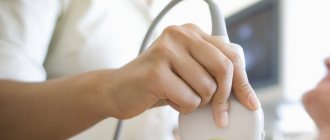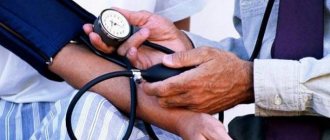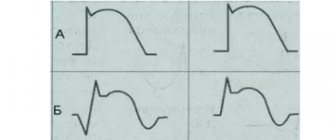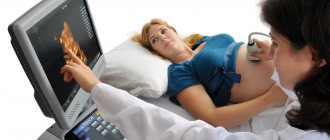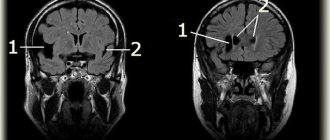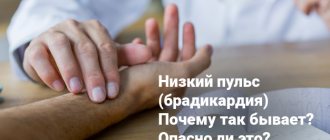At the first visit and for certain indications, a pediatric cardiologist in Saratov will be able to determine whether the child has bradycardia. The main feature of the disease is a decrease in the working pulse rate, which can be expressed to varying degrees. It is extremely important for parents to show their child to a specialist at the First Children’s Medical Center on time, undergo the necessary examinations in pediatric cardiology in Saratov, take tests and, based on their results, receive a doctor’s conclusion and recommendations.
The first signs of bradycardia in a child
First of all, it is fatigue. In addition, the following violations are identified:
- frequent headaches;
- moodiness;
- loss of consciousness;
- sometimes painful sensations in the heart or back in the area between the shoulder blades.
There are many causes of bradycardia in children. Such disorders may be associated with viruses and infections suffered during pregnancy, genetic predisposition, premature birth of a child with a weight below 2.5 kg, and congenital heart defects.
Bradycardia in children can be diagnosed at different ages. If you notice frequent pale skin, semi-fainting, or an increased need for sleep in your child, you should immediately make an appointment with a pediatric cardiologist in Saratov and find out about the rate of heart beats per minute depending on age:
- for newborns - up to 160;
- children under 1 year - 120–140;
- up to 5 years - the average is 100;
- 8–10 years – up to 80–90 beats per minute;
- at 12 years and older - up to 75 beats per minute.
Bradycardia in children can be diagnosed from the first day of birth if the average is below 160 beats per minute. For middle and high school students, a contraction frequency below 62 beats in a calm state is already a reason to contact a pediatric cardiologist in Saratov.
Non-sinus bradycardia is diagnosed less frequently in children, and usually accounts for 3.5–4% of all patients with heart disease. Its danger is that it can cause rapid cardiac arrest, but is asymptomatic and is detected during a routine examination. Therefore, it is extremely important to regularly and independently visit pediatric cardiology in Saratov and take all the necessary tests.
To treat or not to treat sinus bradycardia?
It depends on its cause in the first place.
If bradycardia occurs while taking medications, then after they are discontinued, as a rule, it disappears and does not require treatment. If bradycardia is persistent, persists for a long time and is poorly tolerated by the patient, then it certainly requires correction, up to the implantation of a pacemaker. In case of mild sinus bradycardia, you can get by with taking Zelenin drops (20-30 drops in warm water 1-2-3 times a day, as needed). Your doctor will provide information on how to treat bradycardia in your case.
You can make an appointment by phone or through the appointment form on the New Hospital website
Types of bradycardia
At the first examination, a pediatric cardiologist in Saratov will help determine the main type of bradycardia in order to prescribe treatment and supportive procedures in the future. It is customary to distinguish the following types:
- Physiological - especially popular among athletes and does not harm the body. It is often called moderate bradycardia because it is caused by a well-trained heart.
- Absolute - an anomaly in which violations are observed under various circumstances.
- Relative - diagnosed in children under certain stable factors: crying, fever, sports or emotional stress.
Bradycardia in children is often caused by congenital heart disease. The main threat is that if the working rhythm is disrupted, the heart does not pump the required amount of blood, which means that the required amount of oxygen does not reach the brain. Pediatric cardiology in Saratov will select the most effective and supportive therapy for your health. The child will be less tired, will be able to do more physical exercise, and over time may even learn suitable sports.
Symptoms
There are three degrees of the disease: moderate, severe and mild bradycardia. Each degree has its own heart rate and symptoms.
Light form
This degree is characterized by a decrease in heart rate to 60 beats per minute . A slow heart rate can occur in healthy people. The following factors may influence this:
- physical activity;
- hypothermia;
- dream.
Moderate degree
In this case, the child may not be bothered by anything. The baby's heart beats at a rate of about 50 beats per minute .
However, even with little physical activity, the child’s body will lack blood supply. The following symptoms may appear:
- fainting;
- dizziness when rising from a chair or bed;
- weakness;
- dyspnea;
- sleep disturbance;
- pain in the chest area;
- loss of strength and inability to perform any physical activity.
No less attention should be paid to this disease in adults. In the materials on our website, we wrote about the symptoms and treatment of the disease, the causes of its occurrence, bradycardia in athletes, and how dangerous it is for the fetus or pregnant woman.
Severe bradycardia
With severe bradycardia, fainting and falling often occur. This condition is accompanied by a decrease in heart rate to 40 beats per minute.
Treatment of bradycardia
If your children get tired quickly and at the same time complain of heart pain, it is worth visiting a specialized pediatric cardiologist in Saratov, Elena Nikolaevna Shulgina and, if the diagnosis of bradycardia in children is confirmed, undergo a course of medication, as well as physiotherapy, exercise therapy, and adhere to preventive methods. Among such methods that help in the fight against moderate bradycardia and its other types are:
- increased water consumption (at least 2 liters per day);
- include cottage cheese, lean meat and seafood in your diet;
- eat a lot of vegetables, bananas and oranges.
Even with a diagnosis of congenital heart disease, with timely treatment, it is possible to normalize the child’s life, fill it with all the joys and usual activities. That is why it is extremely important to contact pediatric cardiology in Saratov at the First Children's Medical Center for consultation as early as possible.
With confirmed bradycardia in children, moderate physical activity and even hardening are allowed. A pediatric cardiologist in Saratov will help you determine acceptable loads and create a sports training calendar. With a competent approach, it is possible not only to improve physical fitness, but also to increase the heart rate, and therefore improve overall well-being. Suitable types of sports include swimming, golf, rowing, and race walking, but wrestling, football, and cycling are strictly prohibited.
Make an appointment with a cardiologist
Choose a doctor
Physiological and pathological bradycardia
Bradycardia can be either physiological or associated with various extracardiac pathologies and heart diseases.
Physiological bradycardia
typical for athletes, especially highly qualified ones, for vagotonic people, people with heavy physical labor, overweight, and reduced emotionality. There may also be a familial tendency for bradycardia. Physiological bradycardia is often moderate, asymptomatic and does not require drug treatment. The following may be recorded on the ECG: sinus bradycardia, rare pauses of up to 2.0 seconds. due to sinoatrial blockade of the 2nd degree, transient atrioventricular block of the 1st degree and isolated episodes of the 2nd degree of type 1 at night.
Bradycardia can occur in various pathological conditions and can be either temporary or permanent.
Bradyarrhythmias
is a group of cardiac rhythm and conduction disorders. It includes sinus node dysfunction, atrioventricular and intraventricular blocks.
Sinus node dysfunction (SND)
- this is a condition when the SG generates and conducts impulses too slowly and the frequency of atrial contraction does not meet the needs of the body. The causes of secondary DSU can be: increased activity of the vagus nerve in various diseases: pathology of the larynx and esophagus, increased intracranial pressure, obstructive sleep apnea syndrome. Also, bradyarrhythmias can occur during acute pain, a sudden feeling of fear, including during medical procedures (neurotransmitter bradyarrhythmias). Other causes of DSU: electrolyte disturbances (hyperkalemia), obstructive jaundice, dysfunction of the thyroid gland (hypothyroidism), acute myocardial ischemia, hypertensive crisis, taking medications (usually beta-blockers or other antiarrhythmics). Treatment in such cases is aimed at the underlying pathology, eliminating, if possible, the causative factor. Quite often, secondary DSUs in clinical practice include sleep apnea syndrome and hypothyroidism.
Hypothyroidism
- one of the most common endocrine pathologies.
The disease is characterized by low levels of hormones produced by the thyroid gland. As a result of hypothyroidism, the body's metabolism is disrupted and heart rate decreases.
The main diagnostic method is to determine the concentration of thyroid-stimulating hormone in the blood. Treatment of hypothyroidism is hormone replacement therapy.
Obstructive sleep apnea syndrome (OSA)
. It is manifested by the presence of snoring, interrupted sleep with short pauses in breathing, and daytime sleepiness. Often detected in patients with obesity, arterial hypertension, and diabetes. Pauses at the end of an apnea episode are recorded on the ECG at night. Diagnostic methods are cardiorespiratory monitoring and polysomnography. Treatment – CPAP therapy, weight loss.
At the heart of primary DSU or sick sinus syndrome (SSNS)
there is an organic lesion of the sinoatrial zone with the development of inflammation, sclerosis and fibrosis in various pathologies:
- age-related idiopathic fibrosis;
- arterial hypertension;
- heart defects;
- surgical trauma;
- myocarditis and pericarditis;
- cardiac ischemia;
- infiltrative diseases;
- collagenosis, etc.
In most cases, the disease occurs in old age, but it can also occur in young people.
SSSU includes a whole range of arrhythmias:
- sinus bradycardia;
- sinoatrial block;
- sinus node failure;
- alternation of paroxysmal atrial fibrillation or atrial flutter with sinus bradycardia and episodes of asystole.
Differential diagnosis is based on identifying symptoms, characteristic signs on the ECG and daily ECG monitoring. Less often, it is necessary to conduct an emergency EPI (a non-invasive method of studying the conduction system of the heart through the esophagus).
Sinus bradycardia - heart rate less than 40 per minute. during wakefulness is an absolute sign of SSSU. Sinoatrial (SA) block is a slowdown or disruption of impulse transmission from the SA to the atrial myocardium. SA blockade of the 1st degree (slowdown, all impulses are carried out) is not visualized on the ECG. SA block of the 2nd degree (some impulses are not conducted to the atrial myocardium) on the ECG is manifested by pauses with the absence of the P wave. SA block of the 3rd degree is a complete block of conduction from the SA to the atrial myocardium, replacement rhythms are recorded on the ECG. Failure (arrest) of the sinus node - periods of asystole for several seconds (there are no P-QRS complexes on the ECG), often accompanied by a short-term disturbance of consciousness.
The main symptoms of the disease include:
- dizziness;
- periodic sensations of heart stopping;
- attacks of rapid heartbeat;
- fainting;
- pain in the heart of a pressing, squeezing nature;
- low tolerance to physical activity, manifested by shortness of breath and weakness.
In case of SSSS, the main method of treatment is the implantation of a permanent pacemaker - a device capable of generating impulses and performing the function of the sinus node.
Prevention
First of all, you need to be regularly monitored by a cardiologist in order to recognize the pathology in time. In addition, preventive measures include:
- control blood pressure and bring it to normal;
- maintaining adequate weight;
- regular physical activity appropriate for age;
- diet;
- choosing foods high in vitamins and minerals that are good for the heart;
- limiting smoking and alcohol;
- if possible, minimizing stressful situations;
- good sleep, rest and relaxation.
Bradycardia is a symptom that may indicate the presence of serious diseases. Under no circumstances should it be ignored. A timely visit to the doctor will help to avoid complications and begin appropriate treatment in time if necessary.
FIND OUT PRICES
Which sport is suitable
Moderate physical activity is what has a beneficial effect on children diagnosed with bradycardia. They will benefit from long leisurely walks in the fresh air, morning exercises and water treatments. Sports should be low-energy and calm.
If your child wants to play big sports, encourage him to look at the following types:
- Swimming will strengthen the heart muscle and increase endurance. Due to the horizontal position of the swimmer, it will improve the pushing of blood through the arteries.
- Golf has a beneficial effect not only on the body, but also on the intellect. It does not require explosive, static or vigorous exercises. Competitions and training take place outdoors, and golfers travel a lot on foot. Almost ideal sport for bradycardia.
- Race walking. Like golf, most of your training takes place outdoors. In this case, there is no heavy load on the heart as with fast running.
- Volleyball. It will not only strengthen the body, but also improve blood circulation.
- Rowing. During rowing, the concentration of oxygen in the blood increases. In addition, it has been noticed that the rowing technique is somewhat reminiscent of a pacemaker. Therefore, this sport has a beneficial effect on the heart.
- Classic cross-country skiing. The principle of aerobic exercise, which enriches the blood with oxygen, also applies here. Considering that training takes place in the fresh air. The efficiency of classic cross-country skiing increases significantly.
Thus, it is best for children with bradycardia to engage in sports that do not put too much strain on the heart, enrich the blood with oxygen, and take place in the fresh air.
Sports heart in children
Natalya Vladimirovna Tereshchenko, a doctor of ultrasound and functional diagnostics at the Edkarik polyclinic, talks about the “athletic heart” in children.
The heart of an athlete is somewhat different from the heart of a person who does not bother with constant intense physical activity. Already from the first months of training, the heart muscle adapts to the stress, which is manifested, in particular, by moderate bradycardia (slowing the heart rate).
Under the influence of properly organized systematic muscle exercises and sports, changes occur in the human cardiovascular system that increase its functional level and the physical performance of the body. Due to the fact that sports have become “younger”, the problem of the sports heart is now facing pediatricians. Recently, the number of cases of myocardial dystrophy (disorders of cardiac muscle nutrition) in children involved in sports has increased. This may be due to an increase in the volume and intensity of training loads without taking into account the individual characteristics of the child. Often young athletes end up in a cardiology hospital with irreversible consequences of myocardial dystrophy. Meanwhile, timely correction of exercise, nutrition and daily routine may well prevent the development of pathological changes in the heart.
For the purpose of prevention, children involved in sports must undergo examinations such as ECG (electrocardiography) and ECHO-CG (echocardiography or ultrasound of the heart) - once a year and, if necessary, be examined by a cardiologist.
Please note that very often, even with existing changes during examinations, children do not complain. Because the compensatory capabilities of the child’s body are very great. An electrocardiogram (ECG) in children often reveals sinus arrhythmia as a feature of childhood.
The position of the electrical axis of the heart is most often normal, but it is often vertical or horizontal (depending on the height and shape of the chest). Some children may experience migration of the pacemaker source within the atria and atrioventricular node. Many children under 12 years of age experience changes characteristic of partial blockade of the right bundle branch (conduction disturbance along the right bundle branch). When performing Doppler echocardiography (Decho-CG or ultrasound of the heart) in children involved in sports, a moderate expansion of the left ventricular cavity without signs of overload and hypertrophy can be detected. Some children experience prolapse of the anterior leaflet of the mitral valve (Mitral Valve Prolapse) within the first degree (up to 4-5-6 mm) with signs of physiological regurgitation and this is not a reason to stop playing sports.
Most often, children who do not experience any discomfort during and after training and competitions are allowed to continue sports activities at the same level. For children who show signs of autonomic dysfunction during medical examinations and who present complaints, it is recommended to reduce physical activity by 2 times in terms of volume and duration of training, establish a rational daily routine and nutrition, and prescribe multivitamin complexes with microelements. Restoration of autonomic functions in children usually occurs within 3 months, less often - within 6 months. The transition from the physiological state of the cardiovascular system in athletes to the pathological one, which is referred to as the “pathological sports heart,” occurs gradually. At this phase of the functional restructuring of the body, which should be regarded as a “state on the verge of failure of compensation,” athletes achieve the highest sports results.
Thus, children involved in sports should be under constant supervision of a pediatrician and cardiologist. It is very important not to miss the so-called borderline state of the cardiovascular system, which can later develop into a pathological sports heart and myocardial dystrophy due to myocardial overstrain. With timely and adequate therapy, complete restoration of the function of the heart and blood vessels is possible.
And most importantly, a growing child’s body has its own physiological characteristics, which are also reflected in the conclusions of the examinations performed. And what sometimes requires treatment in an adult, in a child is most often a variant of the age norm and simply requires monitoring over time without the use of medications. Therefore, come with your child to our specialized children's clinic, where doctors have precise knowledge about the functional age characteristics of childhood and will explain to you in detail the results obtained after the examinations.

